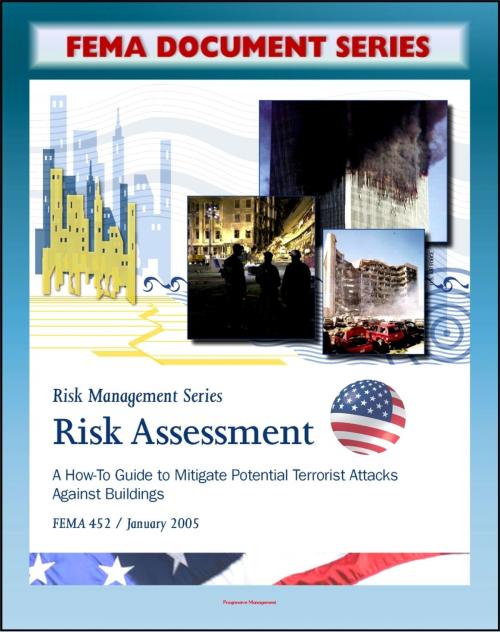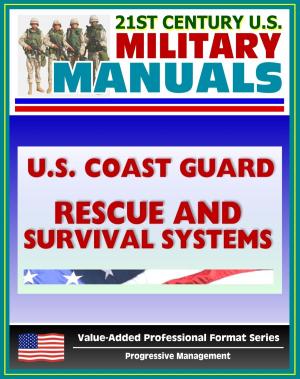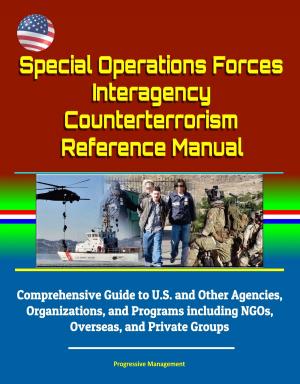FEMA Document Series: Risk Assessment - A How-To Guide To Mitigate Potential Terrorist Attacks Against Buildings, Providing Protection to People and Buildings, Risk Management Series, FEMA 452
Nonfiction, Art & Architecture, Architecture, Social & Cultural Studies, Political Science| Author: | Progressive Management | ISBN: | 9781458033956 |
| Publisher: | Progressive Management | Publication: | June 20, 2011 |
| Imprint: | Smashwords Edition | Language: | English |
| Author: | Progressive Management |
| ISBN: | 9781458033956 |
| Publisher: | Progressive Management |
| Publication: | June 20, 2011 |
| Imprint: | Smashwords Edition |
| Language: | English |
This Federal Emergency Management Agency (FEMA) document is a how-to guide outlining methods for identifying the critical assets and functions within buildings, determining the threats to those assets, and assessing the vulnerabilities associated with those threats. The methods presented provide a means to assess risks and to make decisions about how to mitigate them. The scope of the methods includes reducing physical damage to structural and non-structural components of buildings and related infrastructure, and reducing resultant casualties during conventional bomb attacks, as well as attacks involving chemical, biological, and radiological (CBR) agents.
FEMA developed this Risk Assessment, A How-To Guide to Mitigate Potential Terrorist Attacks Against Buildings, to provide a clear, flexible, and comprehensive methodology to prepare a risk assessment. The intended audience includes the building sciences community of architects and engineers working for private institutions, building owners/operators/managers, and State and local government officials working in the building sciences community.
The objective of this How-To Guide is to outline methods for identifying the critical assets and functions within buildings, determining the threats to those assets, and assessing the vulnerabilities associated with those threats. Based on those considerations, the methods presented in this How-To Guide provide a means to assess the risk to the assets and to make risk-based decisions on how to mitigate those risks. The scope of the methods includes reducing physical damage to structural and non-structural components of buildings and related infrastructure, and reducing resultant casualties during conventional bomb attacks, as well as chemical, biological, and radiological (CBR) agents. This document is written as a How-To Guide. It presents five steps and multiple tasks within each step that will lead you through a process for conducting a risk assessment and selecting mitigation options.
As a bonus, this compilation includes the up-to-date U.S. Army Training and Doctrine Command (TRADOC) handbook on terrorism, the Military Guide to Terrorism in the 21st Century. A Military Guide to Terrorism in the Twenty-First Century is a reference guide prepared under the direction of the U.S. Army Training and Doctrine Command (TRADOC), TRADOC G2 as a capstone reference guide on terrorism. Understanding terrorism spans foreign and domestic threats of nation-states, rogue states with international or transnational agents, and other actors with specific strategies, tactics, and targets. This terrorism guide addresses foreign and domestic threats against the United States of America in a contemporary operational environment (COE). This informational handbook supports institutional training, professional military education, and operational missions for U.S. military forces in the War on Terrorism (WOT). This document provides an introduction to the nature of terrorism and recognition of terrorist threats to U.S. military forces. A common situational awareness by U.S. military forces considers three principal venues for armed forces: forces that are deployed, forces that are in transit to or from an operational mission, and forces that are primarily installation or institution support. Compiled from open source materials, this handbook promotes a Threats perspective and enemy situational awareness of U.S. strategies and operations in combating terrorism. This handbook exists primarily for U.S. military forces; however, other applicable groups include interdepartmental, interagency, intergovernmental, civilian contractor, nongovernmental, private volunteer, and humanitarian relief organizations, and the general citizenry.
This is a privately authored news service and educational publication of Progressive Management.
This Federal Emergency Management Agency (FEMA) document is a how-to guide outlining methods for identifying the critical assets and functions within buildings, determining the threats to those assets, and assessing the vulnerabilities associated with those threats. The methods presented provide a means to assess risks and to make decisions about how to mitigate them. The scope of the methods includes reducing physical damage to structural and non-structural components of buildings and related infrastructure, and reducing resultant casualties during conventional bomb attacks, as well as attacks involving chemical, biological, and radiological (CBR) agents.
FEMA developed this Risk Assessment, A How-To Guide to Mitigate Potential Terrorist Attacks Against Buildings, to provide a clear, flexible, and comprehensive methodology to prepare a risk assessment. The intended audience includes the building sciences community of architects and engineers working for private institutions, building owners/operators/managers, and State and local government officials working in the building sciences community.
The objective of this How-To Guide is to outline methods for identifying the critical assets and functions within buildings, determining the threats to those assets, and assessing the vulnerabilities associated with those threats. Based on those considerations, the methods presented in this How-To Guide provide a means to assess the risk to the assets and to make risk-based decisions on how to mitigate those risks. The scope of the methods includes reducing physical damage to structural and non-structural components of buildings and related infrastructure, and reducing resultant casualties during conventional bomb attacks, as well as chemical, biological, and radiological (CBR) agents. This document is written as a How-To Guide. It presents five steps and multiple tasks within each step that will lead you through a process for conducting a risk assessment and selecting mitigation options.
As a bonus, this compilation includes the up-to-date U.S. Army Training and Doctrine Command (TRADOC) handbook on terrorism, the Military Guide to Terrorism in the 21st Century. A Military Guide to Terrorism in the Twenty-First Century is a reference guide prepared under the direction of the U.S. Army Training and Doctrine Command (TRADOC), TRADOC G2 as a capstone reference guide on terrorism. Understanding terrorism spans foreign and domestic threats of nation-states, rogue states with international or transnational agents, and other actors with specific strategies, tactics, and targets. This terrorism guide addresses foreign and domestic threats against the United States of America in a contemporary operational environment (COE). This informational handbook supports institutional training, professional military education, and operational missions for U.S. military forces in the War on Terrorism (WOT). This document provides an introduction to the nature of terrorism and recognition of terrorist threats to U.S. military forces. A common situational awareness by U.S. military forces considers three principal venues for armed forces: forces that are deployed, forces that are in transit to or from an operational mission, and forces that are primarily installation or institution support. Compiled from open source materials, this handbook promotes a Threats perspective and enemy situational awareness of U.S. strategies and operations in combating terrorism. This handbook exists primarily for U.S. military forces; however, other applicable groups include interdepartmental, interagency, intergovernmental, civilian contractor, nongovernmental, private volunteer, and humanitarian relief organizations, and the general citizenry.
This is a privately authored news service and educational publication of Progressive Management.















